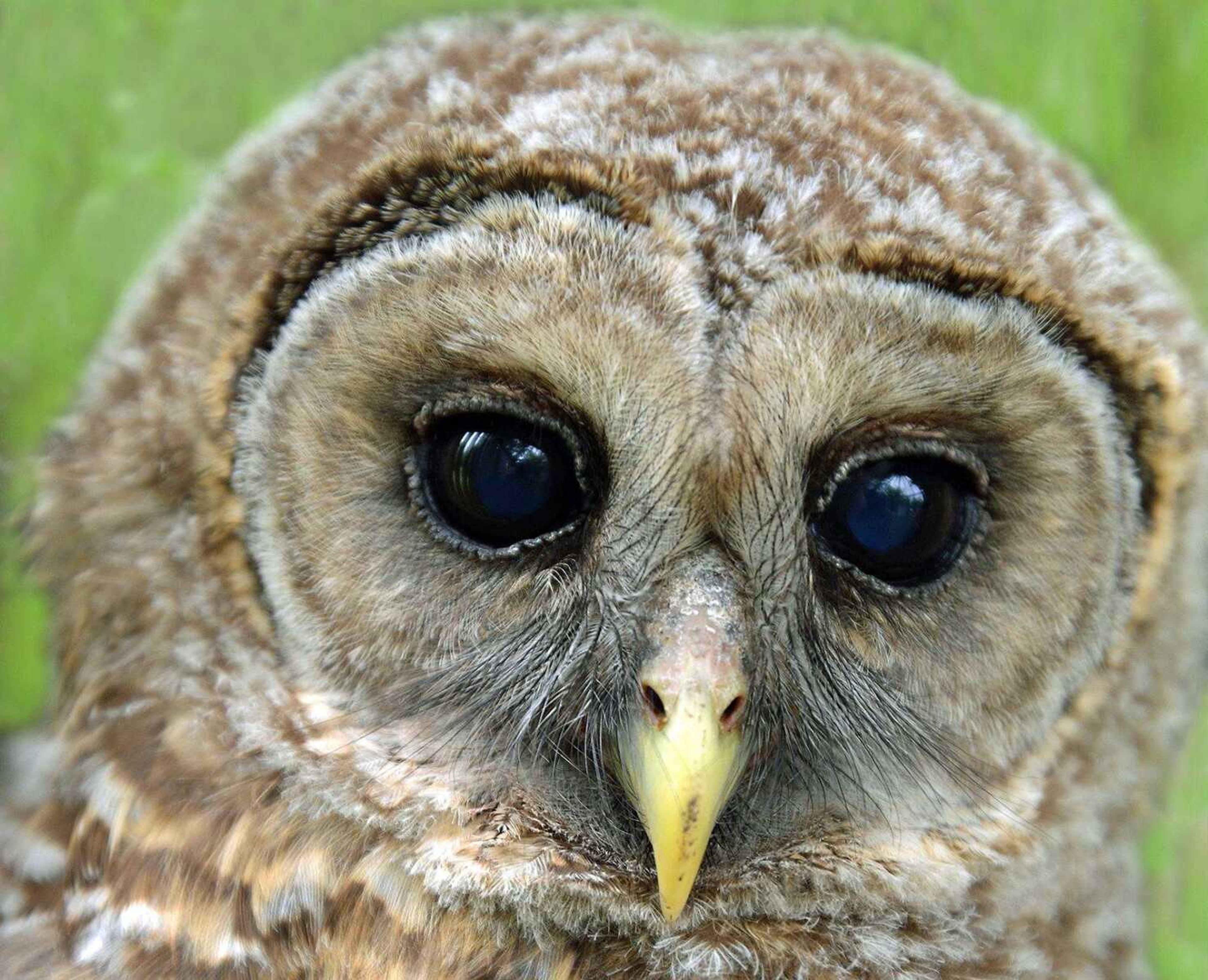The face of a barred owl
This photo shows the wide-eyed stare of a juvenile barred owl. Barred owls are native to and widespread through central and western North America. In Missouri, barred owls usually will lay their two to four eggs and begin setting in late February through early April. The eggs will hatch after about a one-month incubation period. A month or so later, the baby owls will be ready to move out of their nest...
By Aaron Horrell
This photo shows the wide-eyed stare of a juvenile barred owl. Barred owls are native to and widespread through central and western North America.
In Missouri, barred owls usually will lay their two to four eggs and begin setting in late February through early April. The eggs will hatch after about a one-month incubation period. A month or so later, the baby owls will be ready to move out of their nest.
Although owls generally are considered to be nocturnal, barred owls often are seen and heard calling during daytime.
The barred owl will eat a multitude of prey, from field mice to squirrels and songbirds to chickens. They are known occasionally to eat fish and frogs. I once saw an owl flying across a pond carrying a snake.
I took this photo on May 25.
Connect with the Southeast Missourian Newsroom:
For corrections to this story or other insights for the editor, click here. To submit a letter to the editor, click here. To learn about the Southeast Missourian’s AI Policy, click here.










